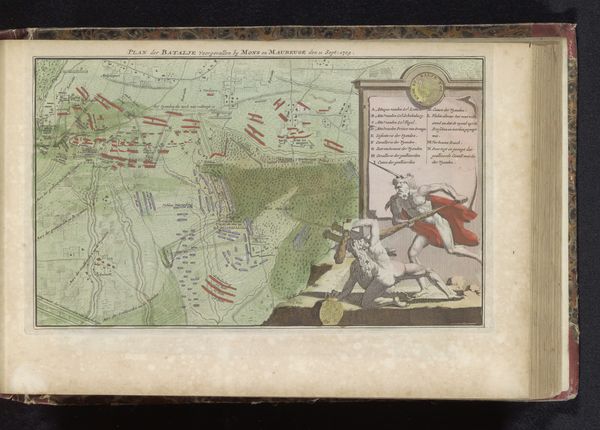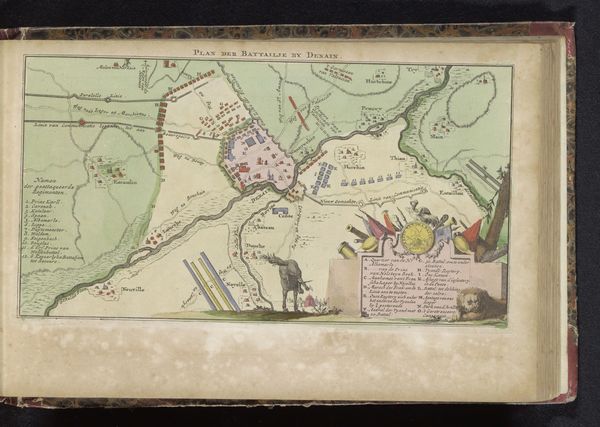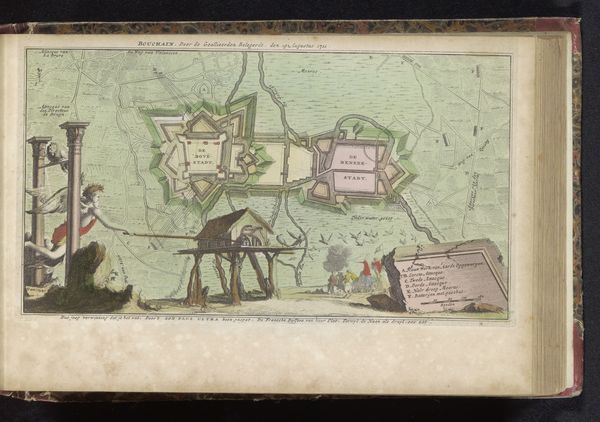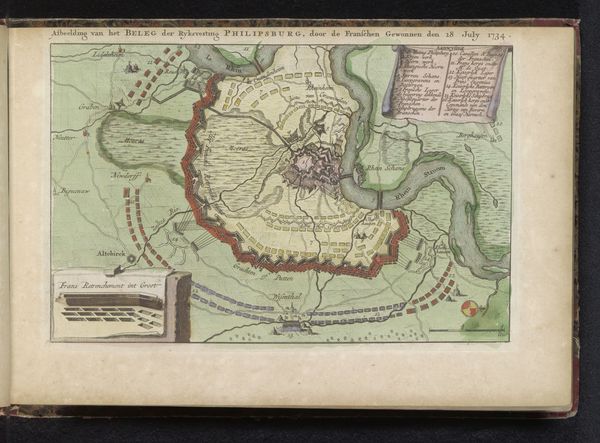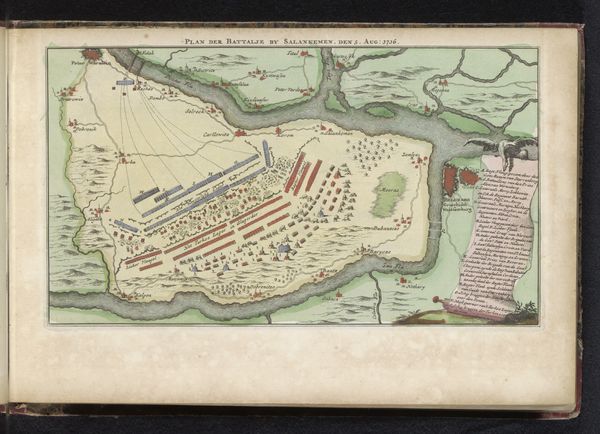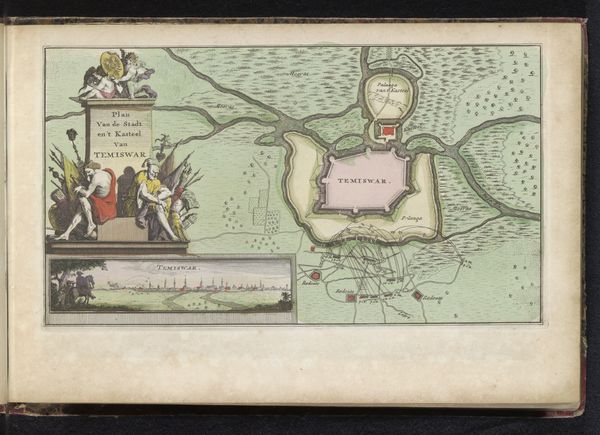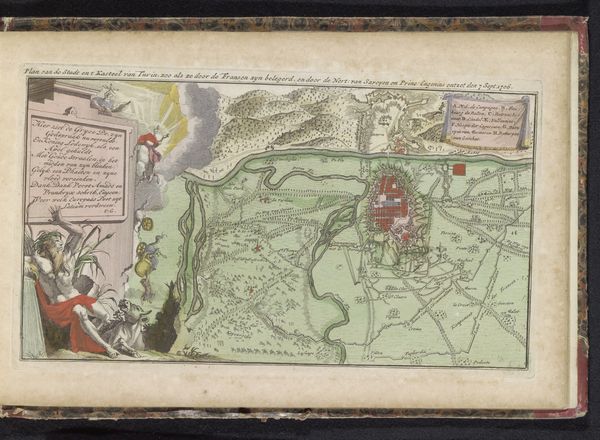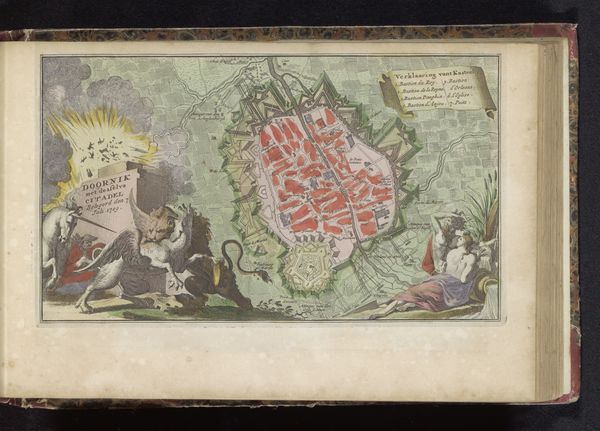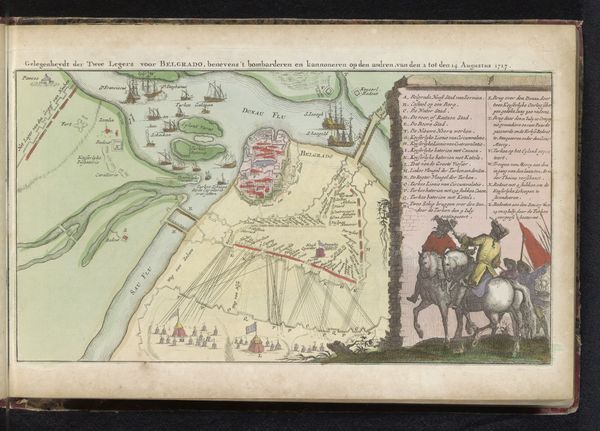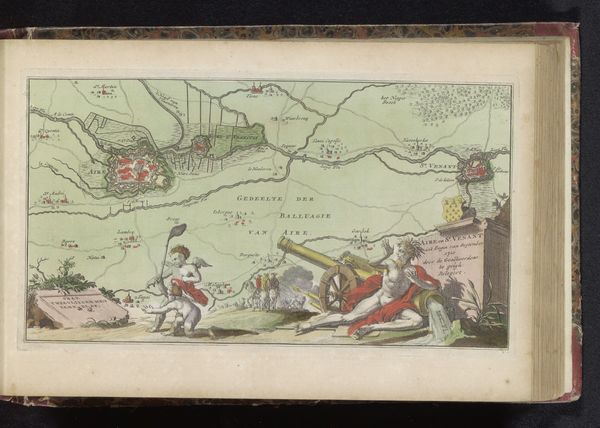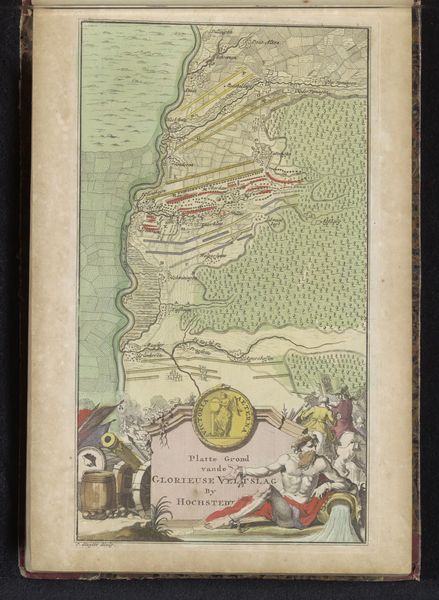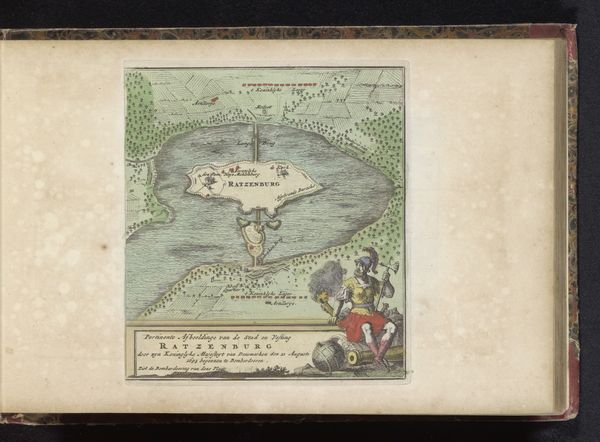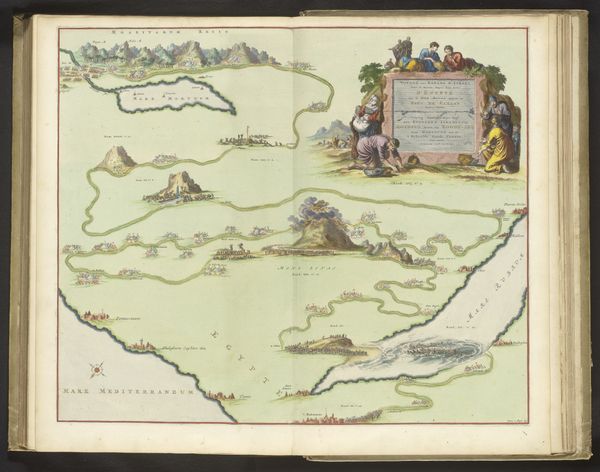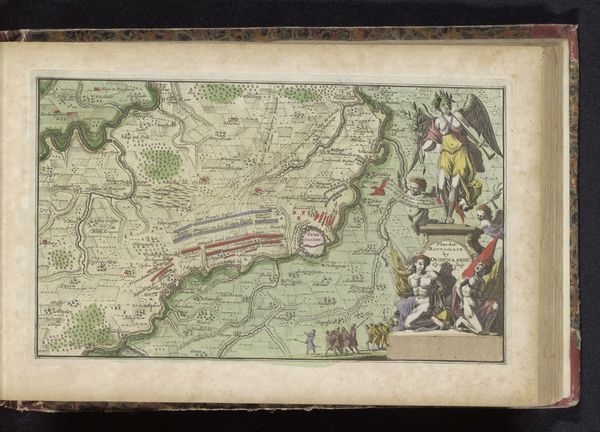
painting, watercolor
#
water colours
#
baroque
#
painting
#
landscape
#
watercolor
#
coloured pencil
Dimensions: height 166 mm, width 266 mm
Copyright: Rijks Museum: Open Domain
Editor: Here we have what's titled "Plattegrond van Stralsund," created in 1735 by an anonymous artist, using watercolour and coloured pencil. It looks like a bird's-eye view of a fortified city, presented almost as a military strategy. How do you interpret this work from a historical perspective? Curator: This piece gives us insight into the complex interplay between art, power, and urban development in the Baroque period. The meticulous detail isn't just aesthetic; it's strategic. What does the prominence of the fortifications suggest about the priorities of the society at the time? Editor: It emphasizes security and control, doesn't it? The city is visually defined by its defenses. Was this cartographic art meant for public display or for a specific audience? Curator: Likely, its primary function was to inform and impress rulers and military leaders, subtly advertising Stralsund's strength. The inclusion of symbolic figures - an angel above the description key, and a Roman soldier on the left - is a clear demonstration of Baroque sensibility. This kind of visual language served to legitimize authority. It prompts us to consider: whose perspective does this map privilege? Editor: That's fascinating. I hadn't considered the propaganda aspect so directly. I was just seeing the beautiful colours. Curator: The aesthetics and function are deeply entwined, each serving the other in projecting power. Consider how such detailed representations could impact public perception of their rulers, too. Editor: I'm seeing this in a completely new light now! It's more than just a map; it’s a political statement wrapped in art. Curator: Precisely. Analyzing art within its historical context reveals the complex ways in which imagery shapes and is shaped by political forces. It helps us recognize the deliberate crafting of narratives of power.
Comments
No comments
Be the first to comment and join the conversation on the ultimate creative platform.
